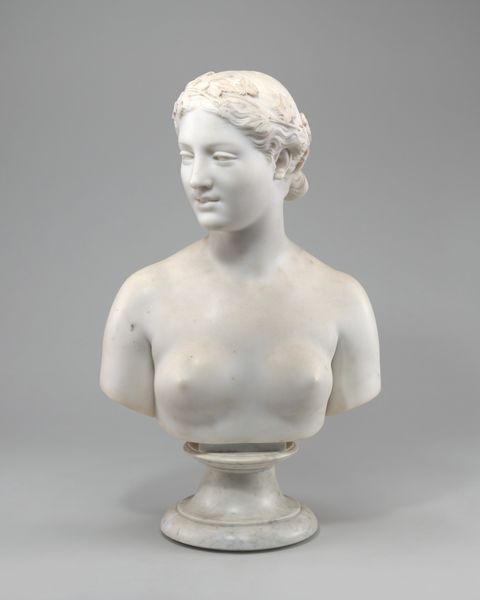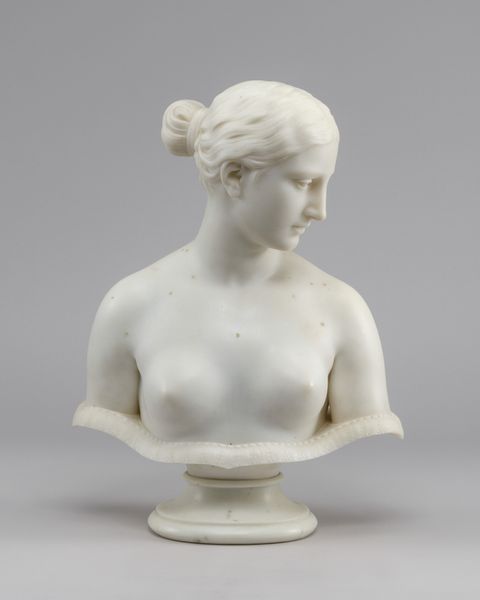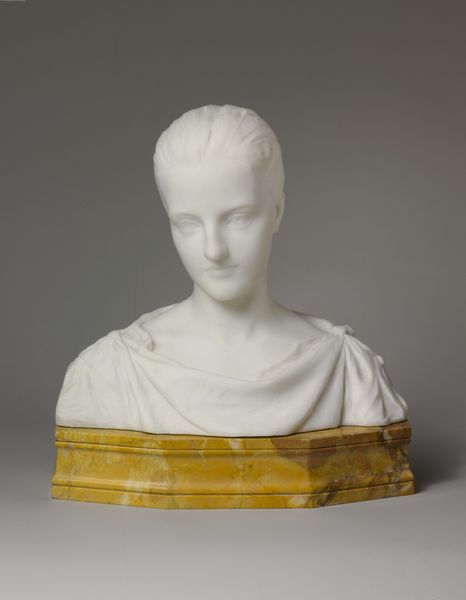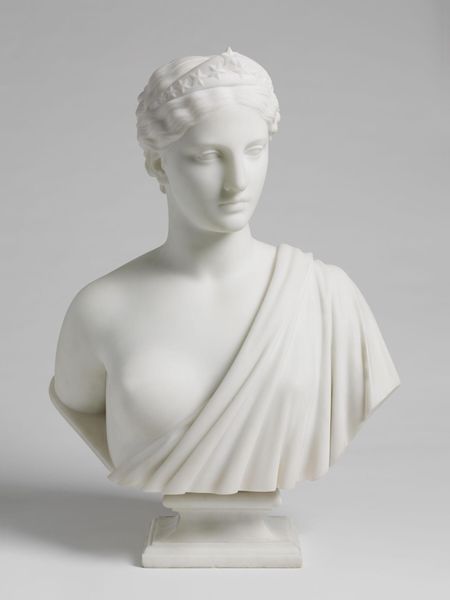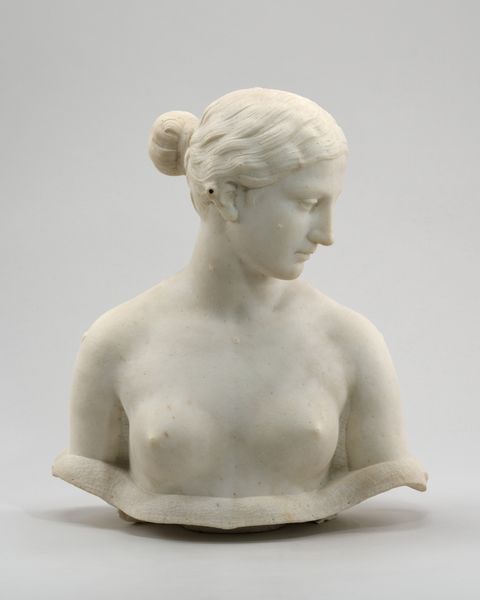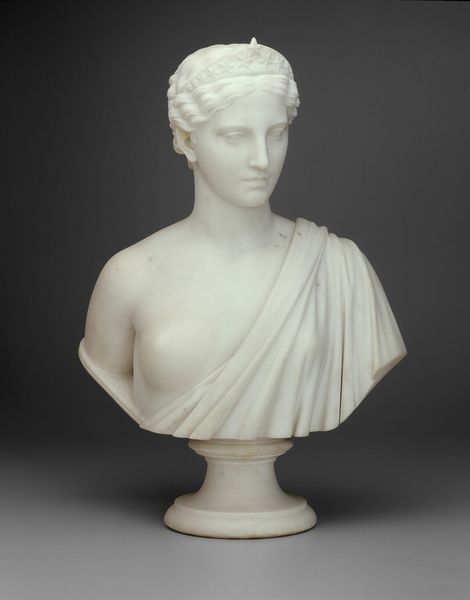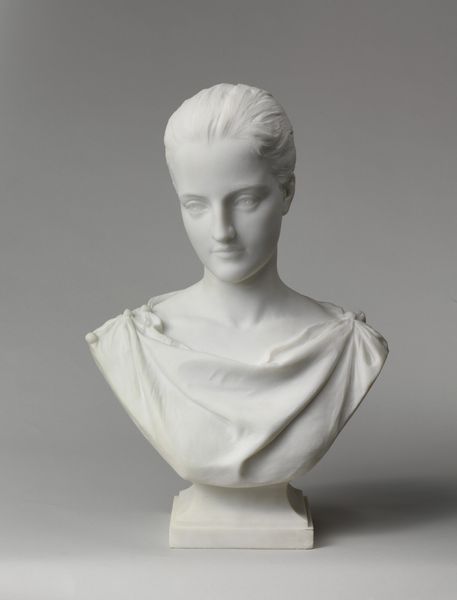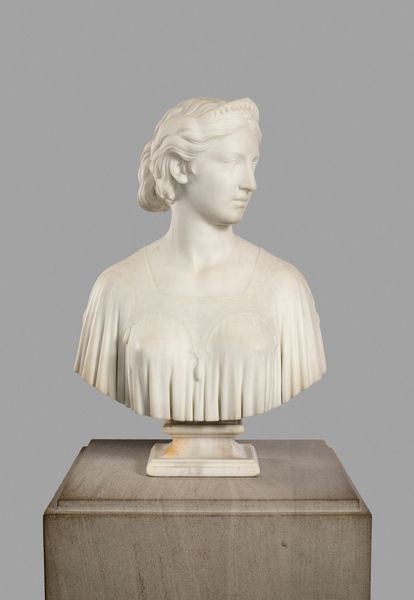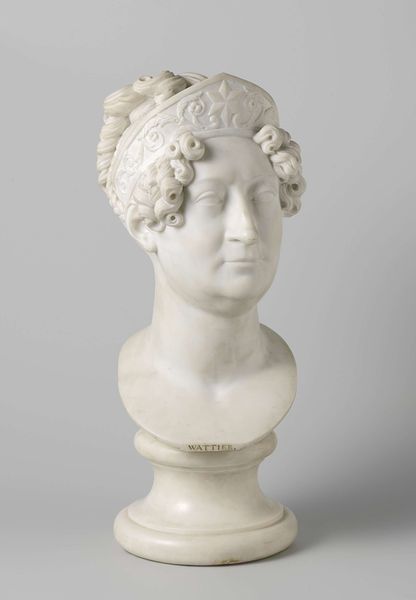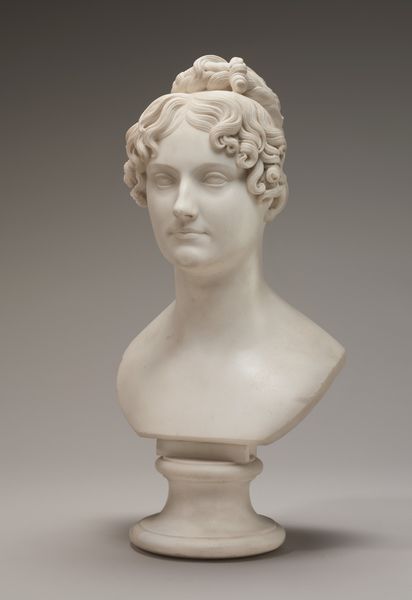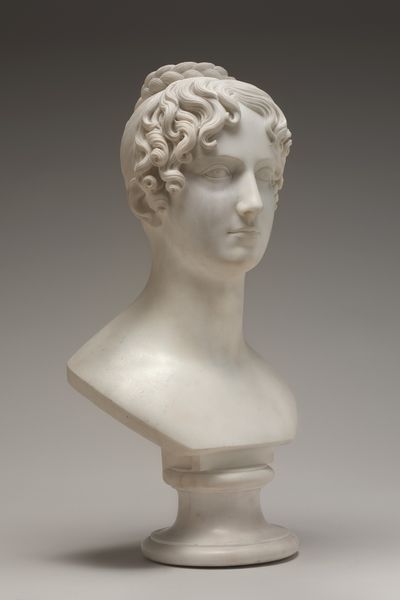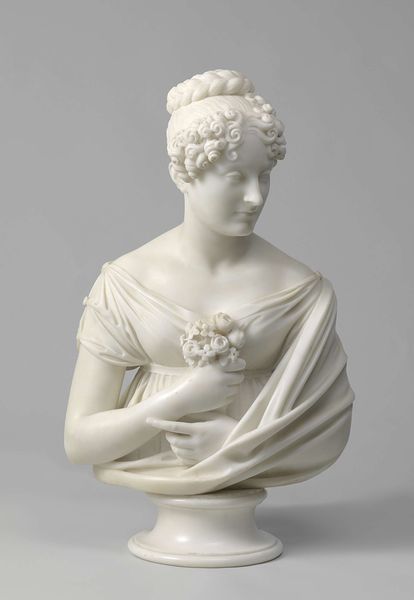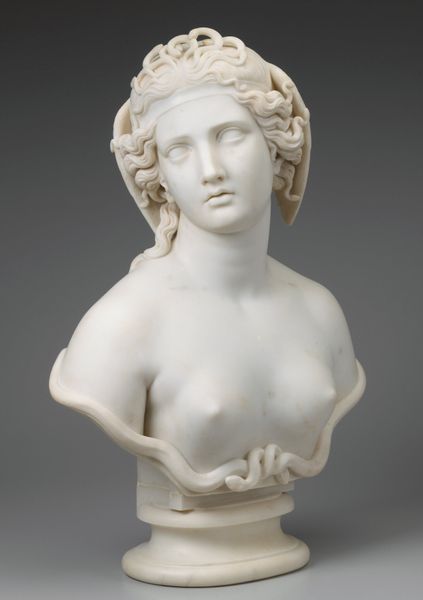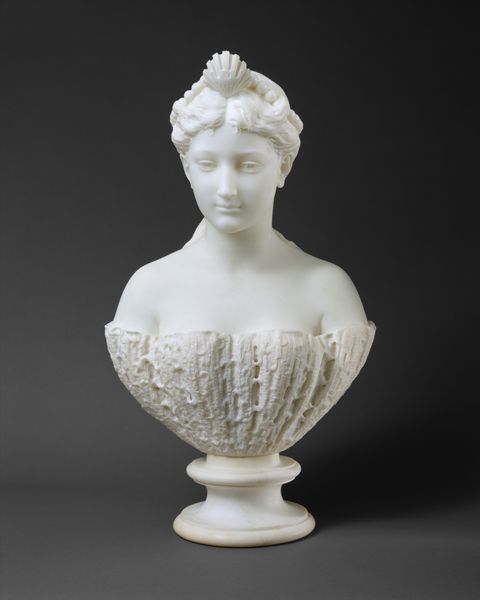
Dimensions: 28 1/4 x 19 5/8 x 9 7/8 in. (71.76 x 49.85 x 25.08 cm)
Copyright: Public Domain
Hiram Powers carved this bust of Clytie in the 19th century using marble, a material prized for its smooth texture and capacity to reflect light. The process of creating this sculpture involved quarrying the stone, roughing out the form with chisels, and then refining the details with finer tools, a labor-intensive process. The whiteness of the marble gives the sculpture a sense of purity and timelessness. The smooth, polished surface invites the viewer to run their hands along the curves of Clytie’s face and shoulders. Powers was part of a Neoclassical movement. While he employed sophisticated techniques, he also engaged with industrial production. Powers made his “Clytie” available in multiple copies, for people who wanted this kind of beauty in their homes. Understanding the material and the making informs our appreciation of Powers's work, showing us how he straddled the line between artisanal craft and industrial production.
Comments
minneapolisinstituteofart almost 2 years ago
⋮
Hiram Powers's bust of the ancient Greek sea nymph Clytie was the artist's attempt to create a bust of ideal female beauty, a concept popular during the middle of the 19th century. Clytie, the daughter of the god of the sea, Oceanus, was so enamored with the sun god, Apollo, that every day she watched his course across the sky. Apollo took pity on her and transformed her into a heliotrope, or sunflower. Clytie became, therefore, the symbol of unwavering love. In rendering Clytie, Powers was directly inspired by a classical Roman bust in the British Museum thought to represent Antonia, mother of Germanicus and the Emperor Claudius. He would have seen reproductions of this bust in engravings as well as marble and porcelain copies which were widely circulated at the time.
Join the conversation
Join millions of artists and users on Artera today and experience the ultimate creative platform.
